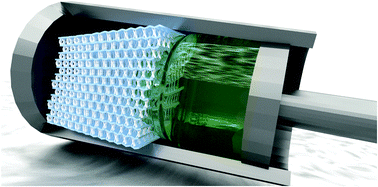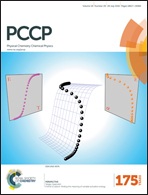Intrusion–extrusion spring performance of –COK-14 zeolite enhanced by structural changes†
Abstract
–COK-14 zeolite, the variant of COK-14 (OKO topology) with a systematically interrupted framework, exhibits unusual behaviour in high pressure intrusion–extrusion cycles of 20 M LiCl solution. After the first cycle with deviating behaviour and partially irreversible intrusion, subsequent cycles show stable reversible behaviour. The system behaves like a spring with unique progressive intrusion in the range of 10–120 MPa followed by enhanced uptake before saturation. While the intrusion–extrusion cycling leads to fragmented crystals, powder diffraction reveals high crystallinity of the fragments. Based on the detailed characterisation of the zeolite samples with XRD, Rietveld refinement, N2 adsorption, TGA and 29Si MAS NMR before and after intrusion–extrusion experiments, a model of the structure of the intruded –COK-14 samples is proposed. Intrusion–extrusion of LiCl solution systematically breaks the most strained bonds in the structure which results in a new framework connectivity with enhanced stability, which persists during the harsh intrusion–extrusion conditions.


 Please wait while we load your content...
Please wait while we load your content...